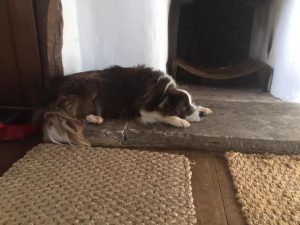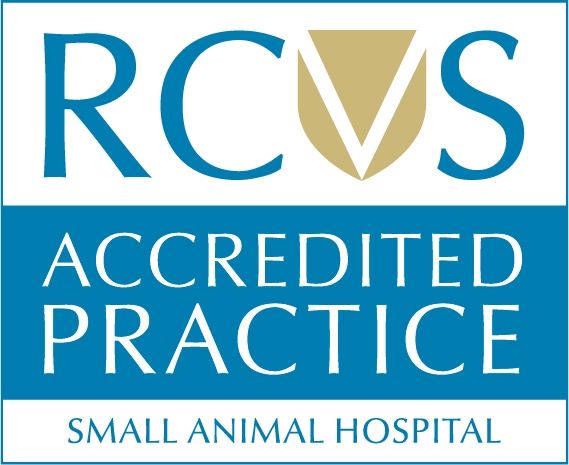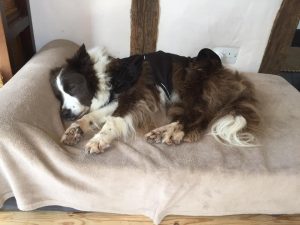Joint pain is very common in middle to older aged dogs of all breeds but the signs are often subtle and develop slowly so are easily misinterpreted as our dog ‘just getting a bit older and slower’.
A dog with joint pain may have a persistent or intermittent limp but often the only signs are that they are slower to rise from their bed or no longer greet us when we come home from work, are less playful than they used to be or need help when getting into the boot of a car. Can you think of an activity that your dog used to do that they can no longer manage?
Photo courtesy of Canine Arthritis Management
What is causing the pain?
Whilst there are many different types of joint disease in dogs, by far the most common cause of joint pain in middle to older aged dogs is osteoarthritis (OA), also known as degenerative joint disease. The most commonly affected joints are the hips, knees (stifles), elbows and the joints in the lower back. It is the pain associated with these joints that cause the symptoms we see.
What is happening to the joint with OA?
Some cases of OA are caused by the joint not being made properly in the first place. This is the case with dogs that have hip or elbow dysplasia. However, a lot of OA is simply caused by normal ‘wear and tear’. Within the joint, a vicious cycle of cartilage loss and inflammation leads to the joint becoming painful and stiff.
What can I do at home to help my dog with OA?
Whilst we cannot completely stop the progression of OA there are things we can do to help slow the progression and alleviate the symptoms. Fortunately, many of these things do not involve giving drugs.
Overweight dogs are more likely to suffer from OA. This makes sense if we consider that the ‘wear and tear’ within the joint will be increased under the pressure of excessive weight. Interestingly, research in human medicine suggests that fat tissue also produces chemicals that promote inflammation throughout the body.
It is never too late for your dog to lose weight and even modest reductions in weight can have a significant impact on their symptoms and general quality of life. Do not hesitate to contact the practice and arrange an appointment if you are not sure about judging your dog’s weight.

Photo courtesy of Canine Arthritis Management
Controlled exercise is a really important element of managing OA. In the short term, your vet may advise you to rest your dog in order to reduce the level of inflammation, but we must not completely stop exercise in the medium to long-term.
Joint cartilage needs repetitive but not excessive loading to maintain its health and we need to keep the muscles around the joint flexible and strong. This means controlling the length of time and intensity of the exercise that we allow our dog to do. Your vet will be able to guide you in this matter.
The following video is a powerful video by Canine Arthritis Management to highlight that nobody should suffer in silence. Their statistics show 80% of dogs over the age of 8 suffer from arthritis and is, unfortunately, a major cause for elective euthanasia.
In the next post, we will look at the options for treating OA including Hydrotherapy, joint supplements, anti-inflammatories, and other painkillers.
Follow Canine Arthritis Management on Facebook

Blog Written by Rupert Davenport BVSc, MRCVS

